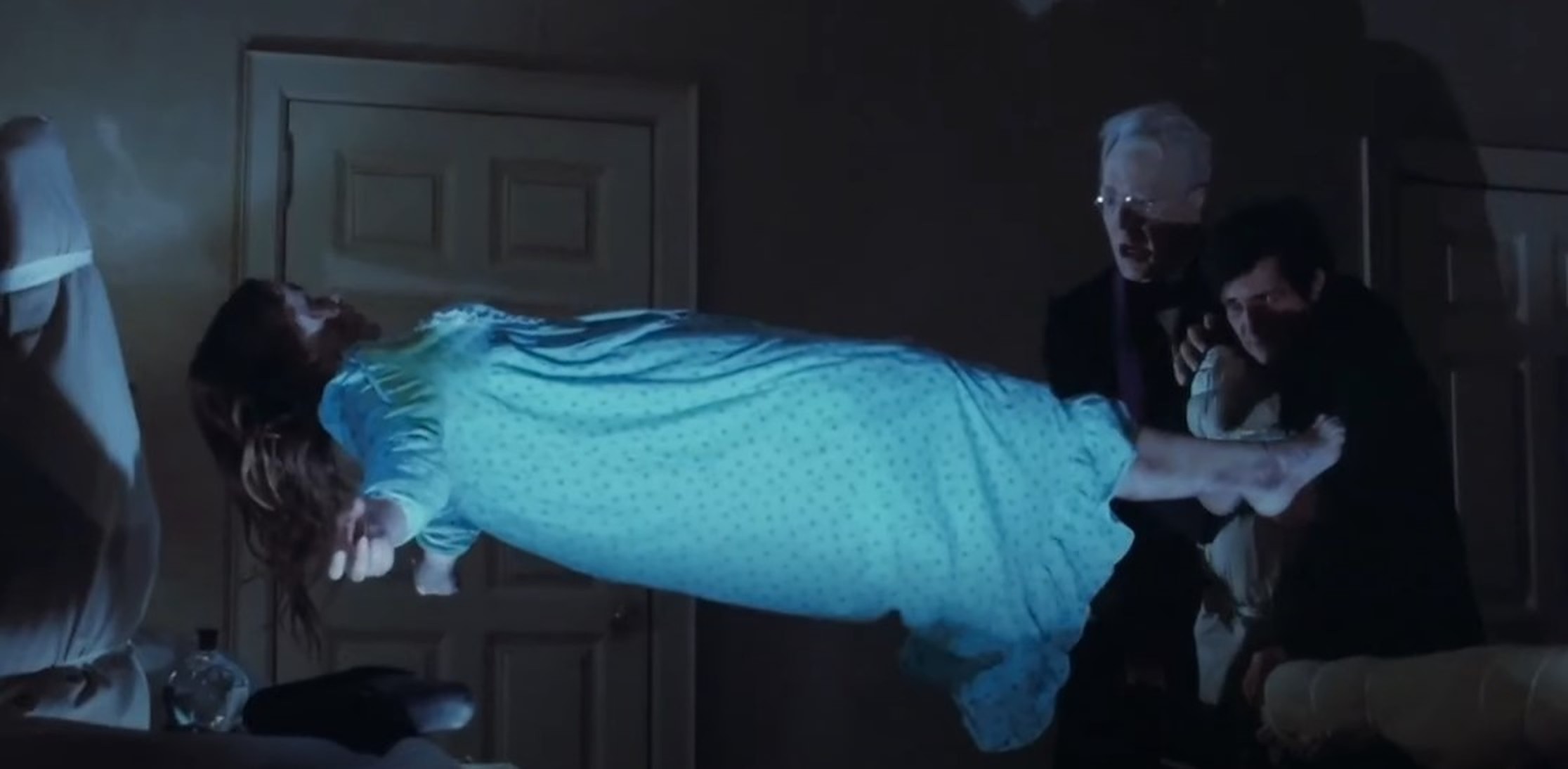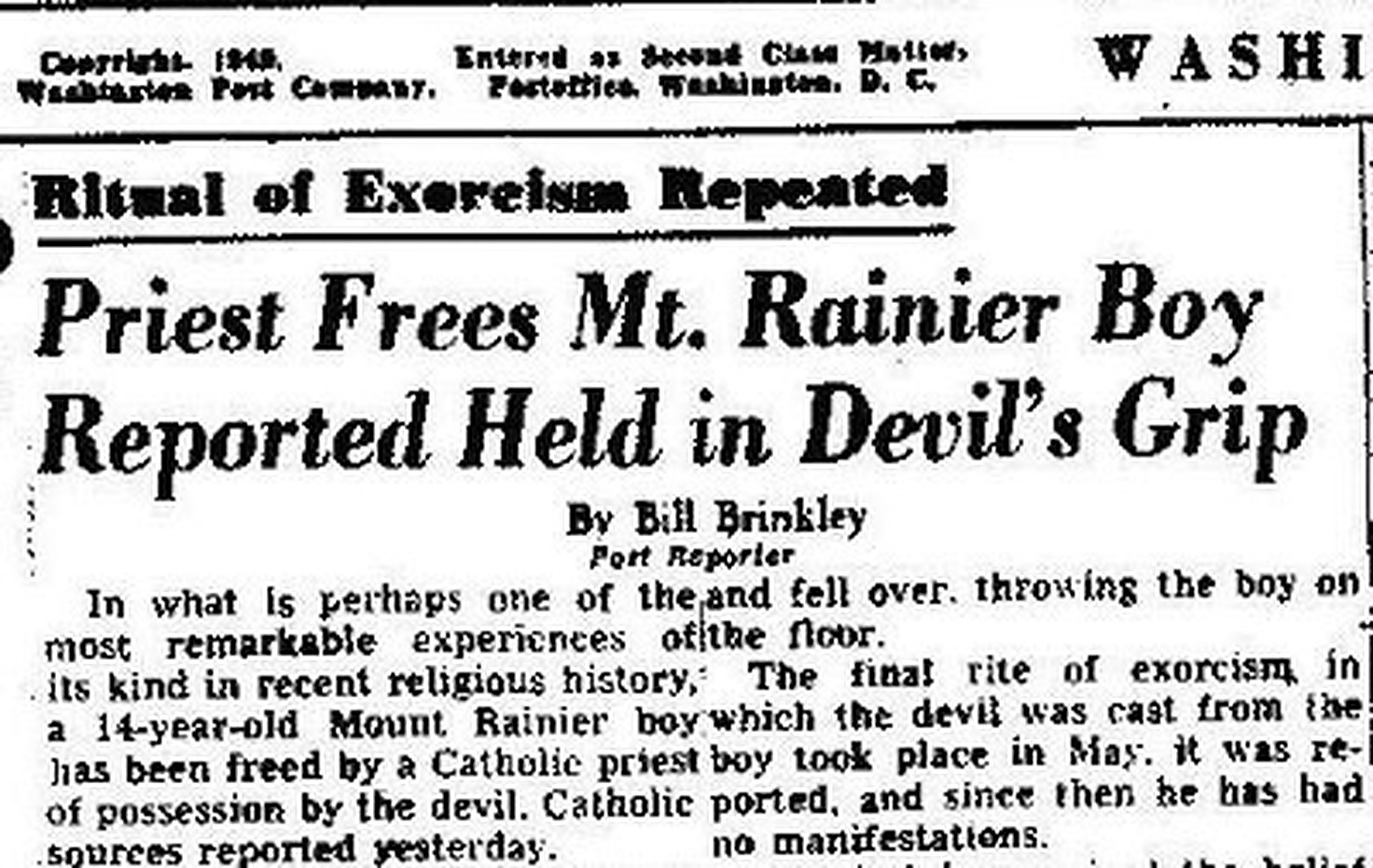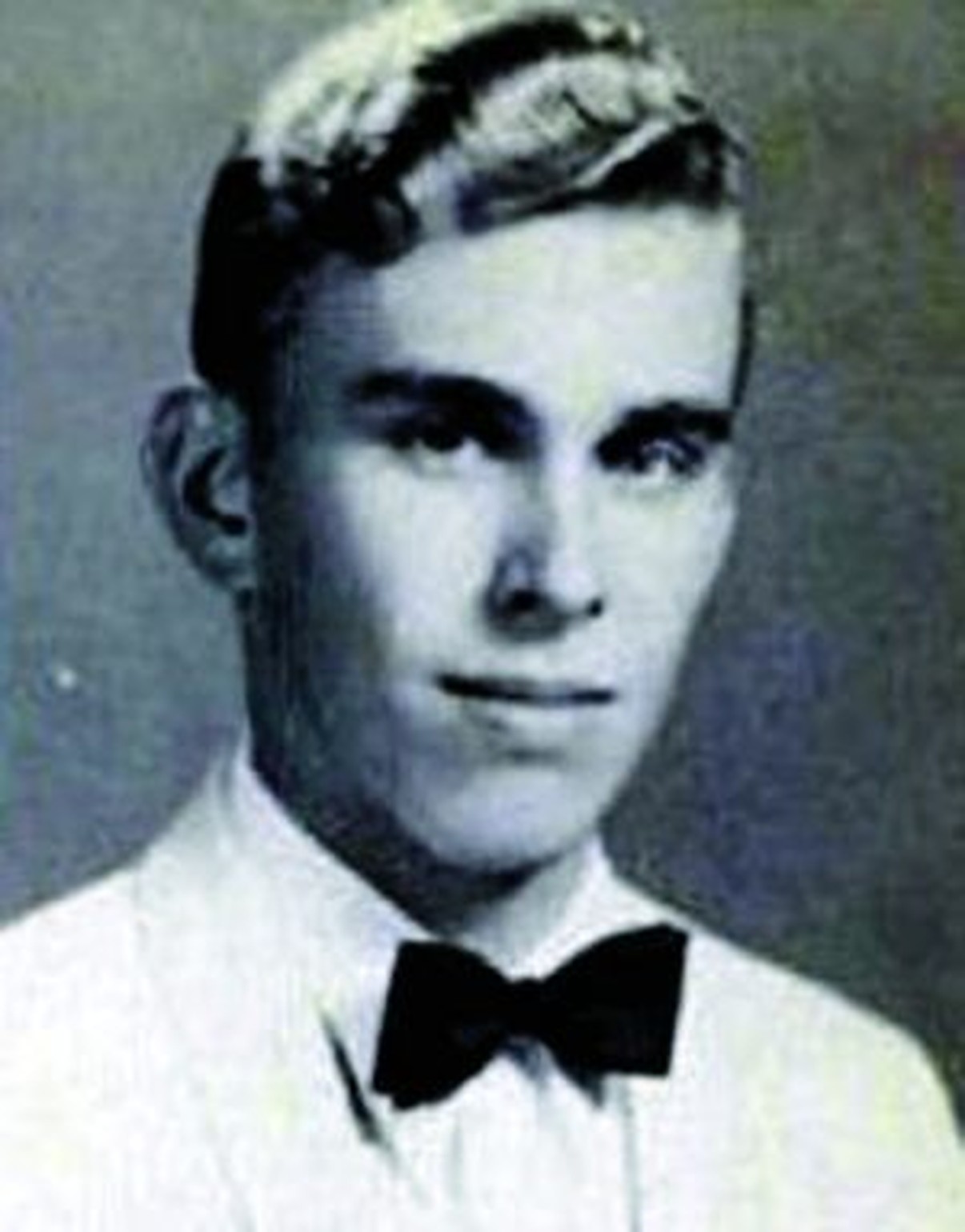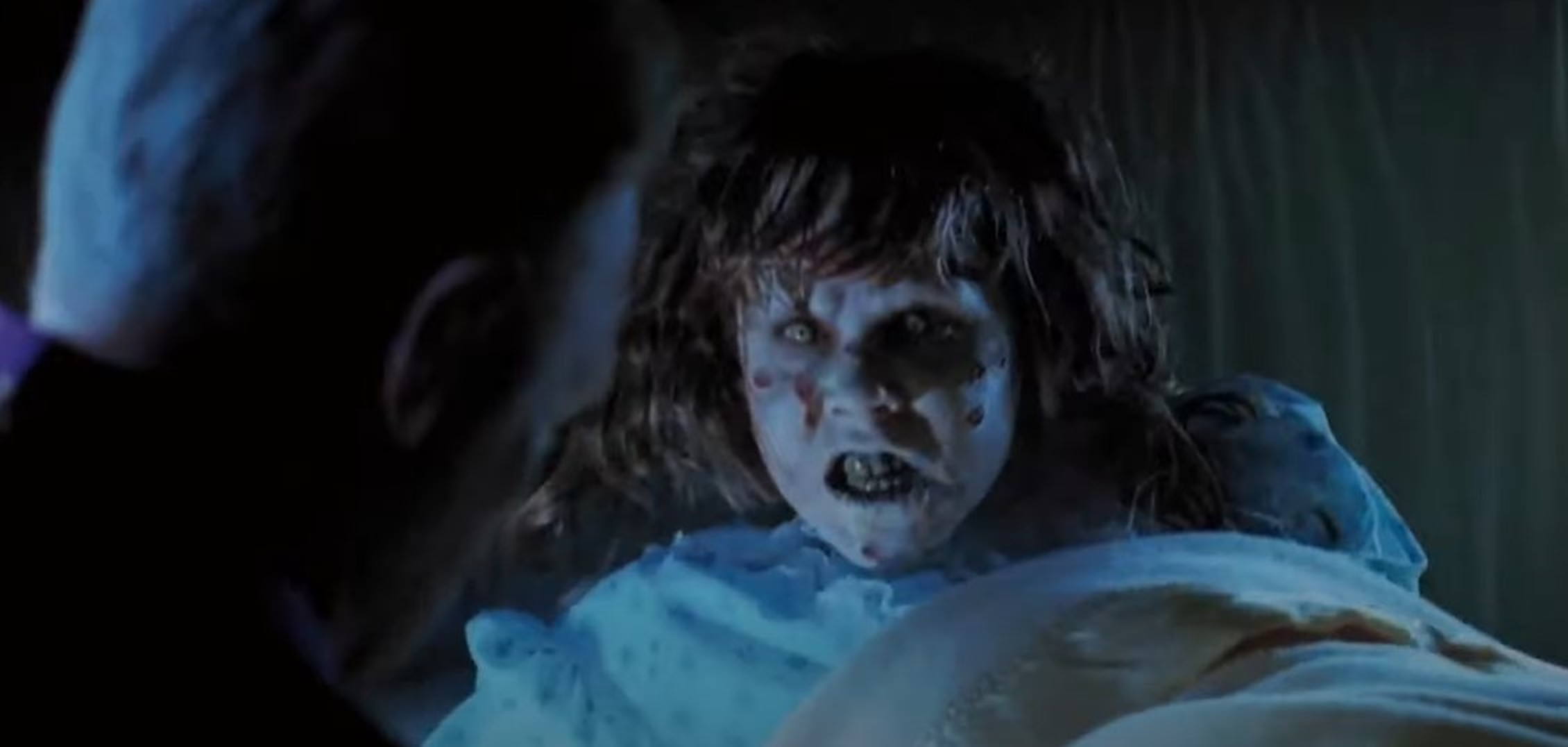‘The Exorcist’ is a supernatural horror movie directed by William Friedkin. The film revolves around Regan, a 12-year-old girl who gets possessed by a demonic entity. When the possession endangers the lives of Regan and those around her, her mother Chris frantically approaches two Catholic priests to conduct a grueling exorcism to save her. Thus, Father Damien Karras and Father Lankester Merrin find their faith being tested as they try to get the powerful demon out of Regan’s body.
With a stellar cast including Linda Blair, Ellen Burstyn, Jason Miller, and Max von Sydow, the double Academy award-winning movie is not just a cult classic but is also considered to be one of the greatest horror movies ever made. The shocking events that occur in the lives of the otherwise realistic characters make the audience wonder whether ‘The Exorcist’ bears any resemblance to a true story. If that’s on your mind too, you’ve found an ally in us. Let’s find out together!
Is The Exorcist a True Story?
‘The Exorcist’ is partially based on a true story. Written by William Peter Blatty, the screenplay is based on his 1971 novel. As per sources, the author based the character of Father Merrin on Gerald Lankester Harding, a British archaeologist whom he met in Beirut while he was posted there for two years with the United States Information Agency. Blatty’s interactions with Harding led him to create the physical model of Father Merrin’s character while writing the novel. Moreover, the character’s first name Lankester is the same as Harding’s middle name.

You might find it interesting to know that Regan’s exorcism was inspired by an article that the author read in The Washington Post in 1949. Written by Bill Brinkley, it described the exorcism of a boy in his early teens from Cottage City, Maryland. Apparently, the ritual was performed by a Catholic priest named Father William S. Bowdern.
Blatty further heard about a secret diary that gave an account of the incident during a lecture while studying at Georgetown University in 1950. His investigations revealed that the boy who went by the pseudo name of “Roland Doe” was born in a German Lutheran family in Cottage City. Soon after the death of his aunt Harriet, in January 1949, the family allegedly began witnessing strange incidents such as scratching noises coming from the bedroom walls, furniture moving by itself, and ordinary objects levitating in the boy’s presence.
According to reports, Roland’s family consulted their pastor Luther Miles Schulze, who arranged for the boy to be kept under observation in his house for a night. The pastor witnessed the boy’s bed levitating while he slept and advised the family to seek help from Catholic priests. A Roman Catholic priest named Father Edward Hughes conducted an exorcism on Roland in the Jesuit-run Georgetown University Hospital. During the ritual, the boy supposedly managed to break free from his restraints violently and used a bedspring from under his mattress to slash Hughes’ arm.

Roland’s parents then took him to St. Louis, where they came in contact with priest Raymond J. Bishop. The priest further consulted William S. Bowdern, a Catholic priest who was his fellow professor at St. Louis University. The priests claimed that Roland behaved normally in the day, but when night came, he suddenly began speaking in a guttural voice, and his bed and surrounding objects began shaking and levitating. Furthermore, he is said to have exhibited hostility towards sacred objects and symbols.
After studying Roman rituals for a month and getting permission from the archbishop, Bowdern began performing an exorcism on Roland in mid-March 1949. He was aided by Bishop as well as another priest named Walter Halloran, and the boy was admitted to The Alexian Brothers Hospital in South St. Louis shortly afterward. Several exorcisms were performed on Roland, and his behavior kept getting increasingly violent with each ritual, including incidents like breaking Halloran’s nose, spitting and urinating on the priests, as well as strange words being mysteriously carved on his chest.
Sources revealed that the exorcism ended in April 1949, and the priests concluded that Roland’s body was finally free of the demonic entity. Halloran claimed that the boy went back to his regular life. As per reports, the exorcism was chronicled by Bishop in his detailed notes, but the official record of his visit to St. Louis was concealed by the priests involved.
Bishop’s document was rediscovered in 1978 after the hospital was demolished. However, Father Halloran went public about Bishop’s diary and provided a copy to author Thomas B. Allen, who wrote the 1993 book ‘Possessed: The True Story of an Exorcism’ based on Bishop’s notes. This was the very diary that also inspired Blatty to write ‘The Exorcist.’
The credibility of Roland’s story has been widely debated in various literary pieces such as Allen’s book as well as author Mark Opsasnick’s investigative article in Strange magazine. The latter claimed in his extensive research that Roland most likely could have suffered from mental illness and lack of proper psychological assessment methods. Opsasnick further stated that unverified hearsay could have been the reason why the incident gained notoriety. On top of that, Bishop’s account of the incident is slightly questionable as it only includes the events from March to April 1949.

Although, Father Bowdern wrote in a letter to Blatty that the incident was fully authentic. He stated, “I can assure you of one thing: The case I was involved with was the real thing . . . I had no doubts about it then, and I have no doubts about it now.” Furthermore, Roland’s true identity was supposedly discovered to be Ronald E. Hunkeler, which was confirmed by Opsasnick in an interview. Hunkeler’s address and records also matched the accounts given by Halloran and Bowdern, as well as the natives of Cottage City. It has been reported that after the incident, he went on to work in NASA for several years and died in 2020.
Thus, even though it is disputable whether the ordeal faced by Hunkeler AKA Roland was psychological or supernatural, he was indeed an actual person whose story inspired Blatty’s novel and the narrative of Regan. Besides this incident, Blatty also briefly referred to the Loudun and Louviers possessions from 1634 and 1647 in France, involving the conviction of priests for sorcery and demonic possessions. In conclusion, the movie ‘The Exorcist’ borrows from true events and mixes real and fabricated elements in the most riveting fashion.
Read More: Where Was The Exorcist (1973) Filmed?


You must be logged in to post a comment.